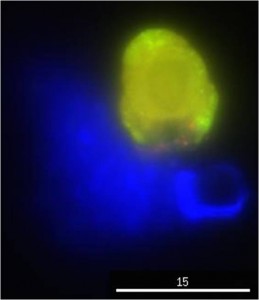![]() Our researchers discover that programmed cell death of algae may play an important role in driving the global carbon cycle
Our researchers discover that programmed cell death of algae may play an important role in driving the global carbon cycle

Read this article in Molecular Me
May 8, 2013 — Nearly 25 gigatons of carbon is cycled annually through the oceans, replenishing resources for a healthy planet. This process is carried out by interactions among different groups of microorganisms, each performing a different role in a network that has come to be known as the microbial loop. In a study published today in the journal PLOS One, researchers at the Institute for Systems Biology report the discovery that programmed cell death of algae is potentially an important step in the microbial loop. Indeed, other organisms benefit from the sequestered carbon and nutrients released by the dying algae. But researchers found that algae as a population – counter-intuitively – also benefit from the death of their kin. ISB scientists made this discovery while studying samples from the Great Salt Lake and were struck by the large numbers in which the algae were dying each night and then regenerating rapidly at an equivalent or better rate the subsequent morning.
Mónica Orellana, the lead author of the paper and a senior research scientist in the Baliga Lab, explained that because climate warming and ocean acidification affect the water column and supply of nutrients, understanding how algae respond to changes in environmental conditions can help scientists develop realistic and predictive models for how to counteract those shifts.
